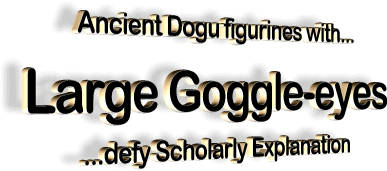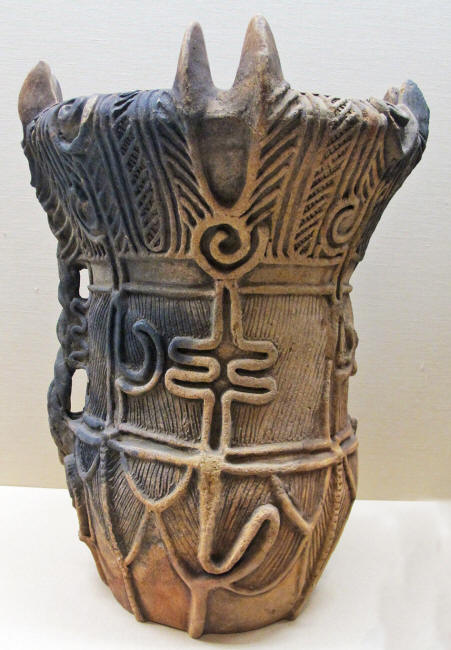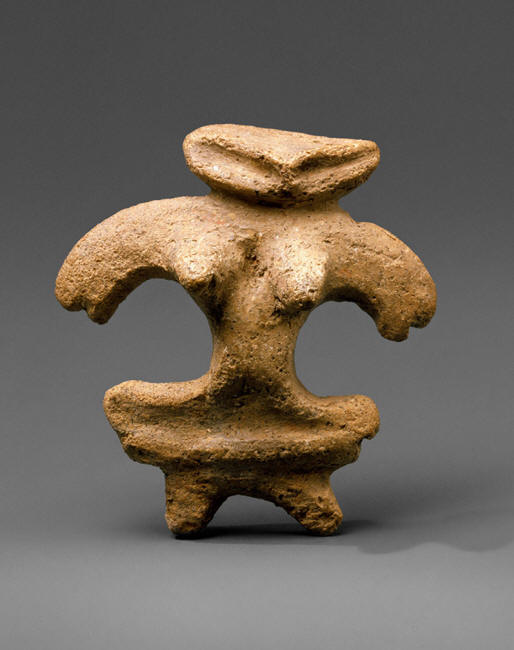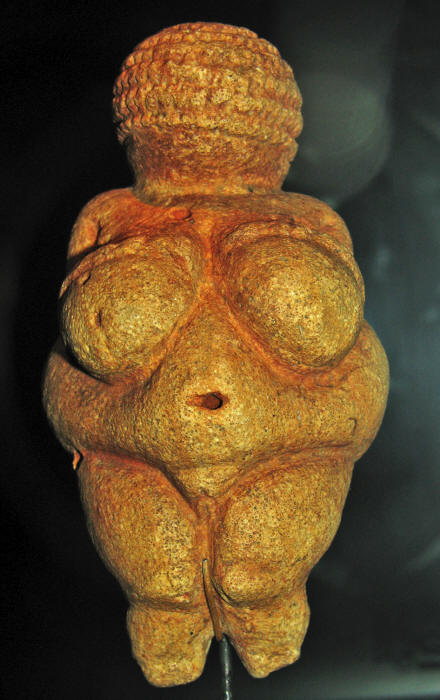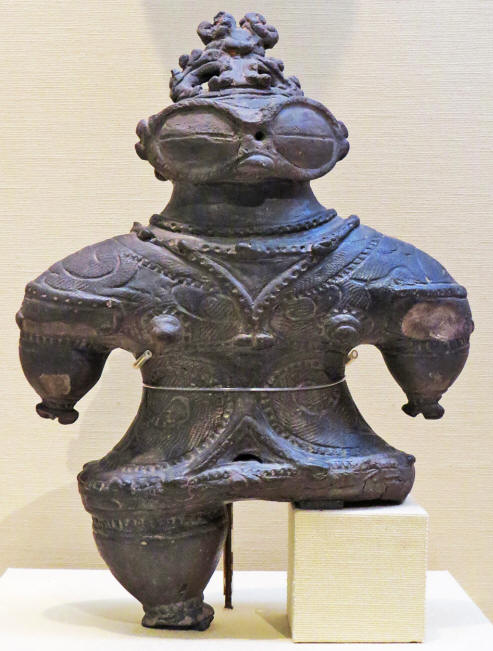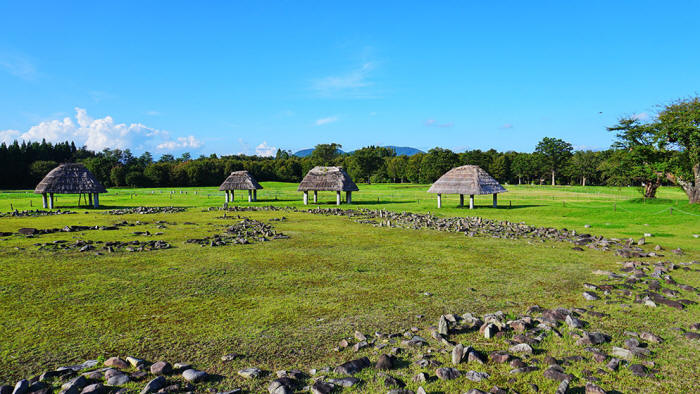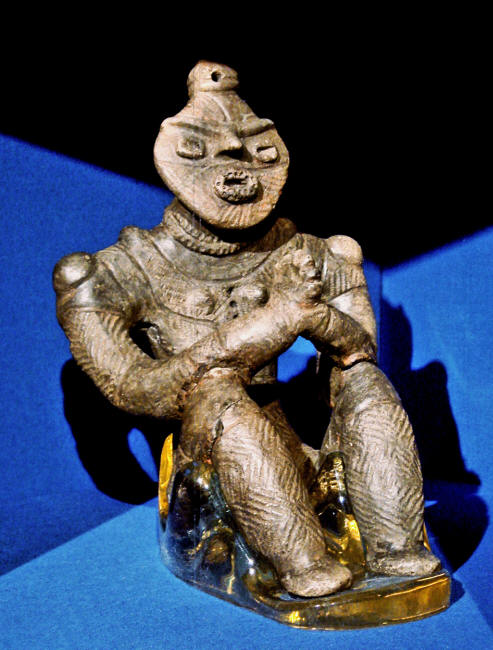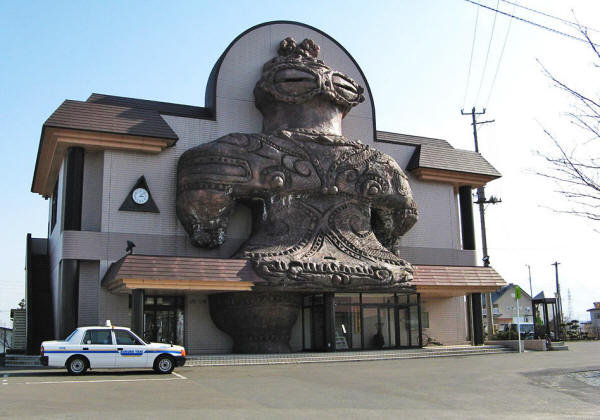|
by Riley Winters
August
13, 2023
Prehistoric Jomon dogu statue with large eyes and hips, Ebisuda Site in Tajiri, Miyagi Prefecture, Japan. 1000–400 BC. Source: World Imaging
CC BY-SA 3.0
Comprised of a sedentary
culture,
the Jomon people are best known for
their early pottery skills and are considered to have created the
earliest forms of pottery in the world.
dated to the Middle Period, 3000–2000 BC.
(I,
Sailko/ CC BY-SA 3.0 )
It is believed by most
Japanese art and archaeological scholars that, despite their
multiple possible functions, these works were most likely evidence
of an early religious culture and shamanic rites.
Most often, these dogu figurines were found in grave circles or stone circles, indicating some form of spiritual inclination of the culture.
Finding these figurines among the dead signify that there was some meaning for them in afterlife rituals, though what exactly this meaning was can never be definitively known.
However, these statuettes underwent many forms of transformation throughout the various periods within the Jomon culture, indicating both a sophistication of artistic technique - undoubtedly inspired by external cultural interactions - and a heightened level of spirituality.
This is best understood
by an analysis of the figurines themselves.
The various types all follow the same basic pattern:
Differences are identified by the previously mentioned names of the forms:
Because of the tendency
for all of these forms to be women however - evidenced by their
breasts and the lack of penises - there is a very prominent belief
among scholars that the dogu might have been fertility
statues. Figure 1. Dogu Clay Figurine, 1000-300 BC.
( Metropolitan Museum of Art, NY )
Images such as
Venus/Woman of Willendorf are considered most likely to represent
either an all-encompassing Earth Mother, or the idea that
prayer for fertility and safe births was necessary. The Venus of Willendorf, statuette found in Austria, thought to have been made between 28,000 and 25,000 BC.
(Don Hitchcock/ CC BY-SA 4.0 )
Again, while all found dogu share wide hips and shoulders, there is a heightened emphasis on the Venus figures¸ as seen in the love handles and bare chest in Figure 1.
Placing this depiction in conjunction with the time frame of the Jomon, a time in history when medicinal knowledge was limited and the likelihood of dying in childbirth was high, these fertility images would have been both important sources of faith and hope for the continuation of familial lines.
Thus, these figures might
have acted as godly offerings from the Jomon people, physical
and representative prayers for safe delivery.
The pertinence of this description is that these were undoubtedly not used in the same way as the venuses, based strictly on the placement of emphasis.
While still wide-hipped,
the eyes are their most important feature, thus it can be assumed
that watchfulness was their importance. Figure 2. Shakōki-dogu, 1000-400 BC. Tokyo National Museum, Japan. "Goggle-eyed type."
(Rc 13/ CC BY-SA 4.0 )
Figurines of Mystery - Unraveling Religious and Magical Aspects of Jomon Culture
They, unlike other cultures, had a plentiful food supply, little risk of invasion because of their location, and therefore a lot of leisure time. Thus, their watchfulness undoubtedly would not have applied to hunting endeavors or warfare.
The watchfulness -
if that is indeed the intention of the goggle eyes - could very
likely have applied to religion, in the same way
the ancient Sumerian votives
emphasized big, bright, lapis lazuli eyes.
In the Sumerian culture, human figurines were often placed on the temples of ziggurats as permanent stand-ins for worshippers, so the gods would be aware that these people were constantly praying.
These "goggle-eyed" dogu
might have been used for the same type of religious substitution,
whether they were worshipping a particular deity or were intended to
represent a person's trip to the afterlife.
The previously mentioned concept of fertility protection or enhancement allows for the theory of a Jomon belief in magical practices.
It is unknown for certain
whether the Jomon had the equivalent of wise women or men, shamans
or priests, but in reviewing all the discussed evidence, there does
appear to be a form of religious practice at play with the
figurines. Ōyu Stone Circles is an ancient ruins in Kazuno City, Akita, Japan. The site is the largest stone circle in Japan.
( 掬茶/ CC BY-SA 4.0 )
Sacred Context -
Dogu's Ritual Placement in Graves and Stone Circles
There is no evidence that
they were worn down through time or shattered by accident. According
to current scholarship, there are definitive indications that
they were broken on purpose...
Therefore, whatever purpose they had for the Jomon was lost by the time the Yayoi period ended.
However, due to their similarities to other religious forms of pre-historic art, the findings of dogu in cemeteries - innate places of religion - and the apparent intentional breaking of the statues, it can be logically postulated that,
Jomon clay statue, Kazahari I, Aomori Prefecture. Late Period, 1500 – 1000 BC. (PHGCOM/ CC BY-SA 3.0)
The distinct forms,
intricate designs, and enigmatic symbolism of dogu have left an
indelible mark on Japan's artistic landscape. Kizukuri Station on the JR Gono Line in Tsugaru, Aomori Prefecture, Japan. (Bakkai/ CC BY-SA 3.0 )
From sculpture and ceramics to contemporary installations, echoes of dogu's unique aesthetic can be seen in various artistic expressions, bridging the gap between centuries.
|

